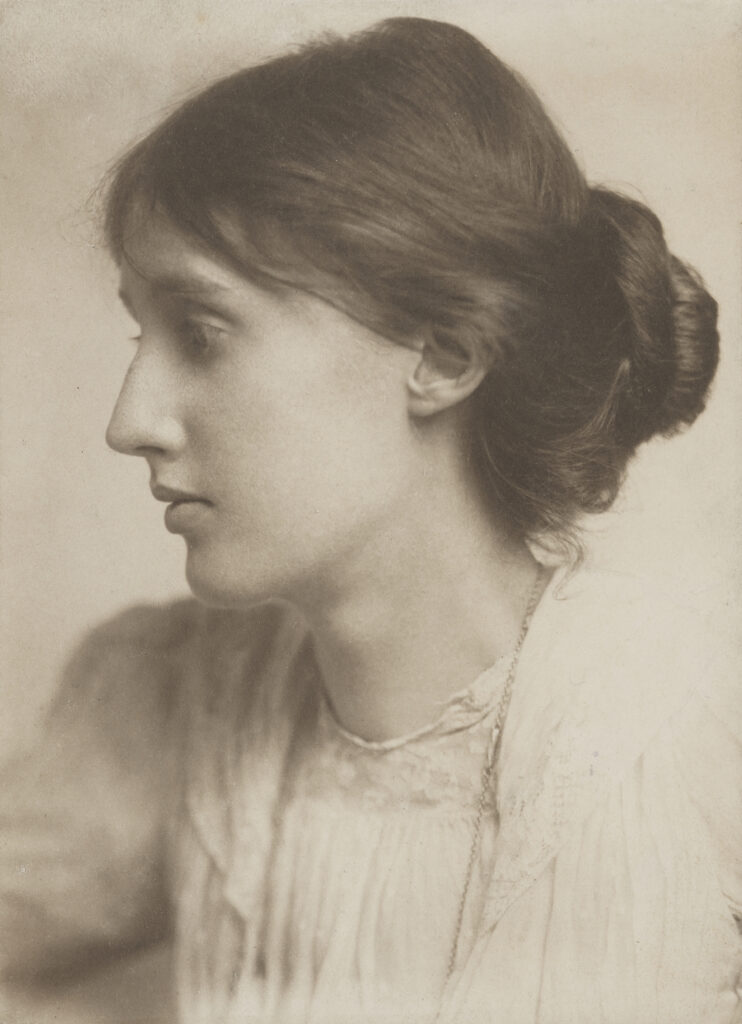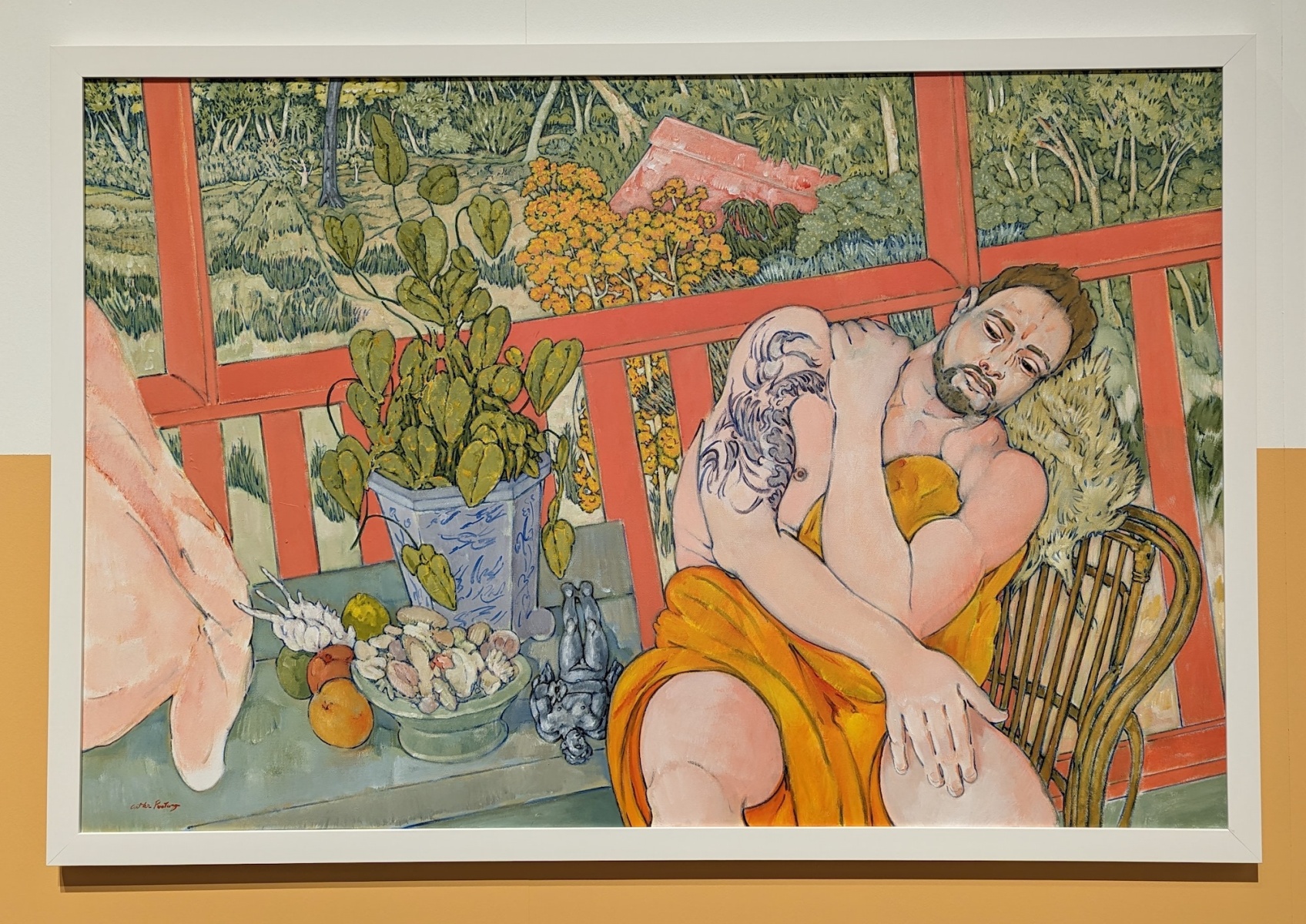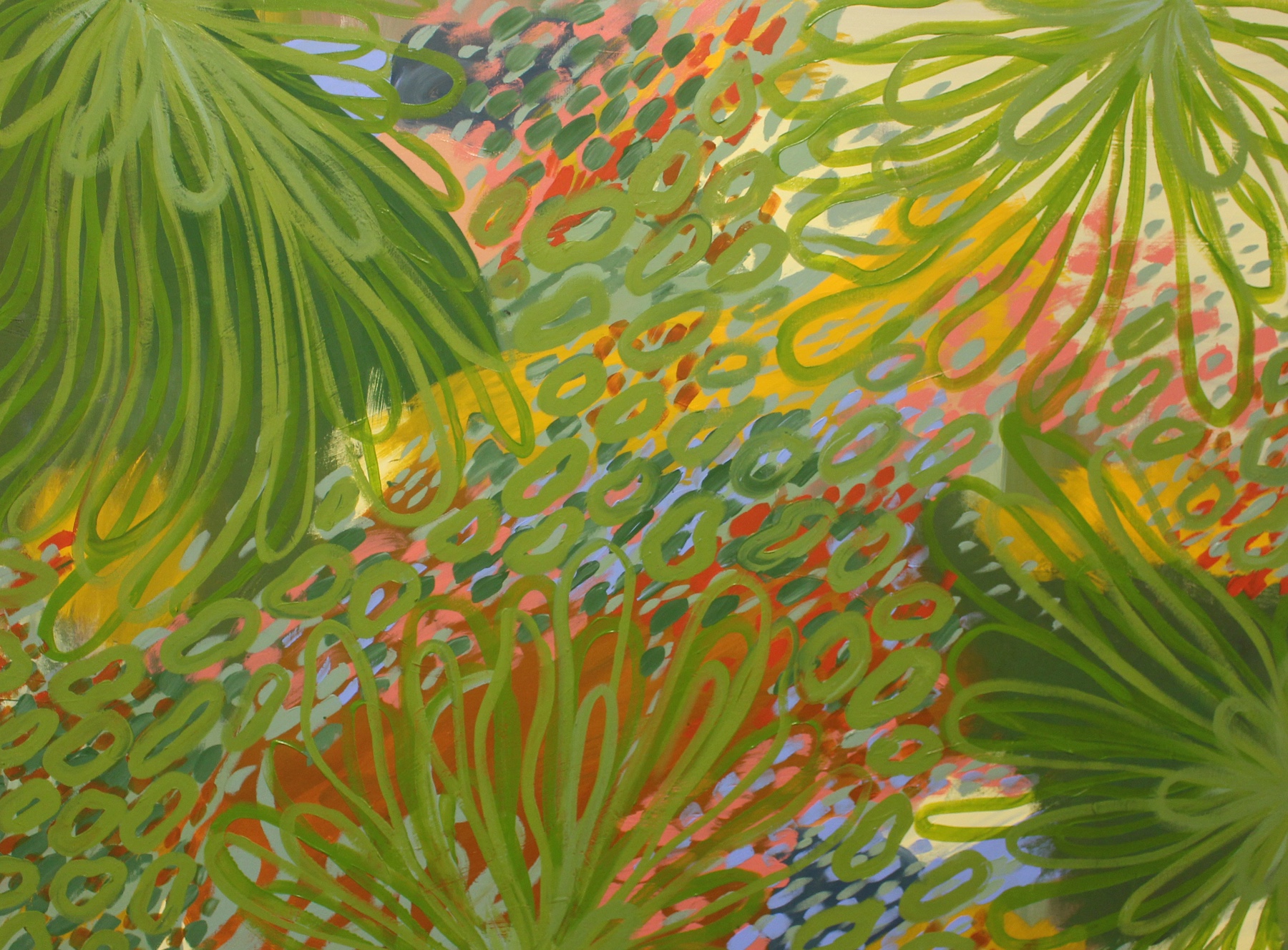
I’d been thinking about Writers Revealed well before I arrived at the Home of the Arts to see it. There are few exhibitions like it in the history of my hometown, but never let it be said that the Gold Coast doesn’t enjoy a spectacle. Having seen it now, I can happily confirm there are rare delights at HOTA this year. Bram Stoker’s playscript for copyright of Dracula, a letter from J.R.R. Tolkien to his grandson, Lord Byron’s sardonic dedication to his archenemy from the original manuscript of Don Juan, a small drawing of Jane Austen by her sister, William Shakespeare’s only portrait from life, and many more. The viewer is taken through picture-book vignettes of the best of English literature, with pleasing representation of British authors of colour, the Windrush Generation, and Black Abolitionists like Ignatius Sancho.
Curators Alexandra Ault of the British Library and Catharine MacLeod with the National Portrait Gallery have united two of London’s best collections for a blockbuster Australian exclusive. Full disclosure, I got the commission for this review after the curators returned to the UK. However, I was able to ask HOTA general manager David Don and senior curator Julie McLaren about what they confirmed was the team’s ‘biggest show delivered to date’. They shared that Writers Revealed (in development before the gallery itself was even built), marks a conscious reshaping of the Gold Coast’s cultural footprint. It is an ambitious exhibition I found to be narrowly living up to the hype, proving a coup for the Gold Coast and a must see for any reader.
In a kitschy flourish, the exhibition space is set out like a book. A “spine” foyer opens into interior walls splayed like pages, defining five thematic “chapters”: In Search of the Author, The Journey to Success, Suppression, Censorship and Secrecy, Fame, and Writing to Change the World. Rather than an initially planned chronological hang, the vignetted authors emerge from their own worlds to create thematic throughlines of oppression and resistance, failure and success, war and love.

Each author has a brief presented alongside their associated portrait, with authentic documents hung on the wall and facsimiles presented in display cases (more on that later). Grand gold-framed paintings hang across from contemporary photographs, and great leaps of time resonate in those few steps from one work to another. It’s amazing how connected you can feel to another person with just a few words and a pair of eyes to look into. Writers Revealed does exactly what it says on the tin, yet it’s just a peek. A literary amuse-bouche tempting viewers towards further reading and wider revelations.
With such a variety of treasures, you find favourites for a variety of reasons. Well-known images are always fun to see with your own eyes. Shakespeare’s glinting earring, Elizabethan dress, and intelligent eyes enliven a face I can only describe otherwise as managerial. Oscar Wilde stares languidly down the barrel of Napoleon Sarony’s camera, while Virginia Woolf turns mildly away from George Charles Beresford’s. An oil portrait of the three Brontë sisters, painted by their brother Branwell, was thought lost for half a century before being discovered atop a cupboard.
The miniature of Jane Austen by her sister Cassandra appears tiny behind glass in a large darkened Meyvaert casket. A kinetic button illuminates the work for 30 seconds at a time, measuring the total light exposure for the National Portrait Gallery’s conservation records. Cassandra famously burned the vast majority of Jane’s papers. One extant letter hangs on the wall next to her sister’s sketch. In it, the novelist compares the intricacy of her writing to miniature painting, both worked “with so fine a brush”.

These documents add emotional colour to their subjects, but also insight to the writing trade. Openhearted letters to publishers from Kazuo Ishiguro, Zadie Smith, and many more show the old and modern masters as young writers grasping for opportunity. The printer’s manuscript of John Wordsworth’s poem I wandered lonely as a cloud shows the importance of edits, revealing the original crossed out simile “I wandered like a lonely [cloud]”. There are also recorded artifacts, like an interview with Hilary Mantel and Sam Selvon reading from his novel The Lonely Londoners. To be fair, it’s a triumph of the exhibition how fascinating it makes what was once dull paperwork – I’ll confidently say I’ve never read so many contracts for fun.
One such subtle jewel is John Milton’s 1667 agreement for Paradise Lost, now the earliest surviving British contract between an author and publisher. Though largely unreadable to the untrained eye, Julie said a thrilled literary agent took a selfie with the contract at the opening event. It has never hung beside the anonymous portrait of Milton as a youthful Cambridge student, painted forty years before the blind poet penned the epic, and may never again. Milton’s contract is one of several artifacts the British Library will “rest” for five to ten years after their Australian sojourn. The public won’t see some of these things for a good while, so see them while you can.
While the authentic works dazzle, the shiny facsimiles were less pleasing. A didactic placed in several spots around the exhibition states “To maintain the long-term integrity of extremely fragile artifacts, certain original items have been reproduced for display in this exhibition”. Some vitrines thankfully included vintage volumes from the HOTA Library and Archives Fine Books in Brisbane, a lovely silver lining that also puts these British authors into a more local context. ‘You need books when you’re talking about writers’, as Julie said. I noted every case had Prosorb humidity stabiliser cassettes and digital monitors, even those just displaying fancy photocopies. When a show markets itself on rare works but presumably faces an impasse, the pantomime of displaying their replicas unfortunately struck me as hollow.

When I asked Julie and David about the facsimiles, they both let out a nervous chuckle. There had been an intention to have only original documents, David confirmed, but after a ‘year and a half’ of negotiating, some things ‘just cannot leave the British Library’. When those things are Shakespeare’s First Folio, I suppose it’s fair. Given the Gold Coast’s tropical humidity is anathema to conservation efforts already, the decision was made to encase originals in microclimate frames and create facsimiles to ‘continue the narrative’ while giving ‘absolute surety to the British Library that there’s no risk of any damage’, in David’s words. Julie conceded they had been expecting ‘more comment’ about the facsimiles, ‘but there actually hasn’t been, I think, because there’s so much on the wall’. Turns out it’s the first show using all the gallery’s display cases, with David proudly noting the experience his team gained and can now use in future projects. Julie pointed out there were very few other regional galleries in Australia with the scale, resources, and security to present a show like Writers Revealed, and I can’t fault her. It seemed to me the facsimiles were collateral in HOTA’s quest to demonstrate capacity with international collections.
The origins of Writers Revealed go back to HOTA’s inaugural director Tracy Cooper-Lavery, before the gallery existed. On a European tour to befriend international institutions in or before 2021, the National Portrait Gallery approached her to develop the show with the British Library. ‘Tracy was able to sign a contract and then over those five years ideas started to formulate,’ David said, ‘and it transitioned to the new curators [Ault and MacLeod] who ended up transforming the show you see today’. Tracy Cooper-Lavery left HOTA in May 2023 for the National Gallery of Australia and former Tweed River Gallery director Susi Muddiman took up the mantle in September 2023.’
In February 2023, the City of Gold Coast voted to amalgamate HOTA and four other cultural tourism organisations under Experience Gold Coast. The ECG’s first annual report says it wants to “reposition and elevate the Gold Coast” as the “Lifestyle Capital of Australia” – with arts and culture as a key driver. When I emailed them, the ECG confirmed Susi left the gallery in early 2025 to “pursue other creative endeavours” and expressed gratitude for her “creative vision”. However, they also confirmed the directorship has essentially been abolished. HOTA is now led by David as general manager alongside the curatorial team, with ECG Head of Arts and Culture Yarmila Alfonzetti overseeing the wider HOTA Precinct. One hopes that this quiet leadership shuffle works out.

Whatever story lies behind the scenes, it seems the plan was always for an exhibition announcing HOTA on the world stage. Julie implied this had already begun to work, revealing there had been ‘more conversations’ with international museums and galleries since the opening. ‘You know, they’ve not necessarily heard of this gallery’, she said, ‘but if we say that we’ve hosted this major exhibition by the British Library and the National Portrait Gallery in London, they start to pay attention.’ Within Australia too, Queensland at large has seemingly thrown off any 20th century notions of cultural cringe – with Queenslanders like Archie Moore flying to the art world’s highest heights. ‘Tracy’s vision initially was to build and establish a really strong culture on the Gold Coast’, added David. ‘I think this exhibition signals a transformation [and says] to the community and the broader Australian contemporary landscape that HOTA is here to stay.’
In a wider context, arts leaders across the world are aghast watching the Trump administration devastate the US museum sector. Recent film tariffs now threaten massive investments in the local movie industry, the defence of which could help define and reinforce the Gold Coast’s cultural identity. Bringing the minutiae of British literary culture to a city known more for beaches, theme parks, and reality TV could seem unexpected. But like much of regional Australia, there is a vivacious art scene thriving below the surface.
Writers Revealed reflects a slowly coalescing Glitter Strip literati culture. One surviving against the odds in a changing city at a time of rising global anti-intellectualism. Often dazzled by the shiny and expensive, perhaps, but there’s true love for the arts here. That’s important. There’s also money to be made and opportunity for the wider community, as HOTA and Experience Gold Coast try to ride that wave. The trick is ensuring artists and arts workers get the resources and autonomy to create. These London treasures are worth seeing with your own eyes, whether you’re a bibliophile or your favourite book is a movie. It’s a meditative exhibition that takes more time to consider than you might think, so do linger. Conservation’s heavy hand is felt across the show’s curation, sure. Yet a Gold Coaster knows when stars come to town, it’s assumed they’ll have security.
Zoe Devenport is a writer, historian, and journalist, formerly at the Mackay Daily Mercury.



